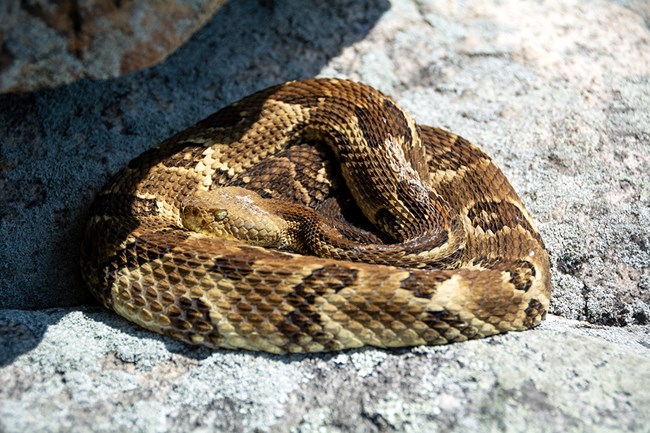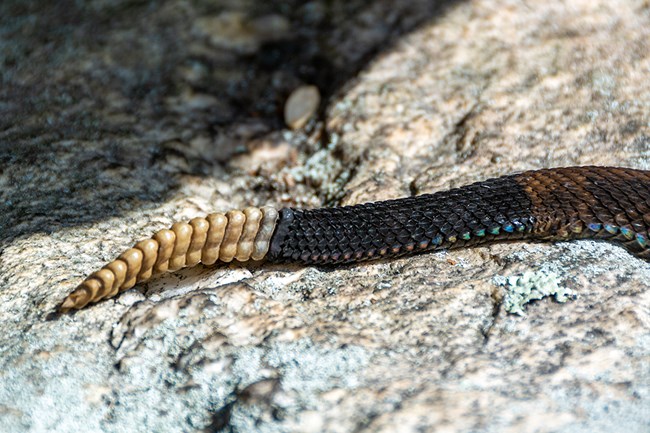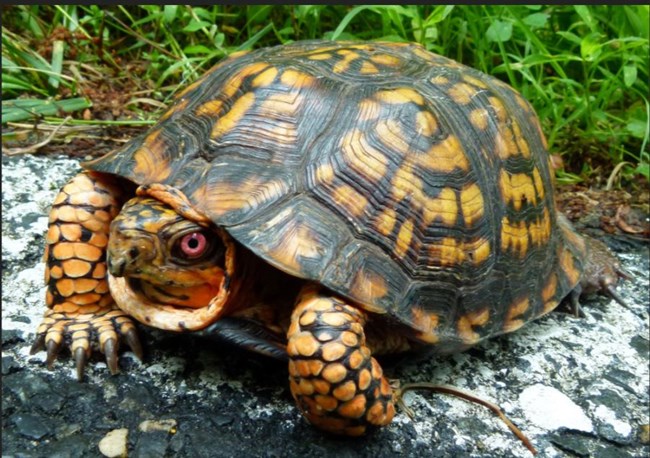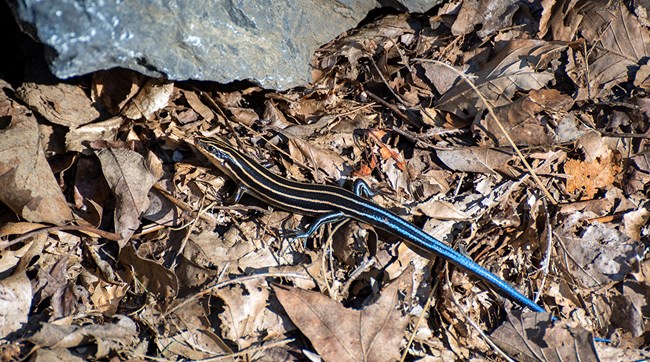
VIP John Zuke 
VIP John Zuke o be confirmed.

VIP John Zuke SnakesOf the 14 species of snakes found in the park, only two of them, the copperhead and timber rattlesnake, are venomous. However, encounters with these two venomous snakes are rare due to their shy and elusive behavior. Their habitat includes rocky slopes, loose rock walls, stream areas, and abandoned buildings or woodpiles. The copperhead and timber rattlesnake differ in appearance from other snakes in the area in that the poisonous snakes have thin necks and triangular heads. The copperhead is tan, and is thus well camouflaged on the forest floor. It may bite if stepped on, but it is primarily a night stalker and is seldom seen during daylight hours. The timber rattlesnake can range in color from yellowish brown to black, with irregular black bands or diamond shape blotches. At the tail end is the rattler, the source of the characteristic high frequency hissing sound that can be heard when the snake feels threatened. The primary food of these two snakes is rodents, but birds, insects, and the occasional frog or lizard help diversify the menu. If you happen to encounter a timber rattlesnake or copperhead on the trail be sure to step back and give it plenty of space. Do not touch the snake or try to move it. These snakes are normally not aggressive and will not bite unless they feel threatened. Other snakes in the park are the northern black racer, northern ring neck, black rat, hognose, eastern milk, queen, northern water snake, brown water snake, green snake, and eastern garter. 
NPS Alicia LaFever TurtlesThe turtle that is most commonly seen in the forest is the eastern box turtle. It reaches an average shell length of 4-6 inches. Males are generally larger than females, have red color eyes, and a concave bottom shell. Females have yellowish brown eyes and a more convex bottom shell. Box turtles feed on invertebrates and carrion as well as an assortment of wild fruits and berries. Although essentially a terrestrial animal, the box turtle enjoys soaking for hours at a time in wet mud or water. It likes moist, forested areas but does not insist on woodlands, and often can be seen on wet meadows or floodplains. During the hot, steamy summer months the box turtle actively seeks out swampy areas where it burrows in the cool retreat of logs or rotting vegetation. The wood turtle, recognized by its distinctive sculptured shell, is the other terrestrial turtle found in the park. Although omnivorous like the box turtle, the wood turtle is partial to vegetation, feeding mainly on wild fruits. Its favorite meal appears to be strawberries and low-bush blueberries. The more aquatic turtles, such as the snapping turtle, spotted turtle and painted turtle, are found closer to streams and ponds. An encounter with these turtles is uncommon because they are quick to hide in the water. 
VIP John Zuke Lizards and SkinksLizards make up the largest group of living reptiles, numbering about 3,000 species worldwide. However, Catoctin Mountain Park is home only to two species, the five-lined skink and the northern fence lizard. There is a possibility that the broadhead skink may be here, but that is yet to be confirmed |
Last updated: August 25, 2020
